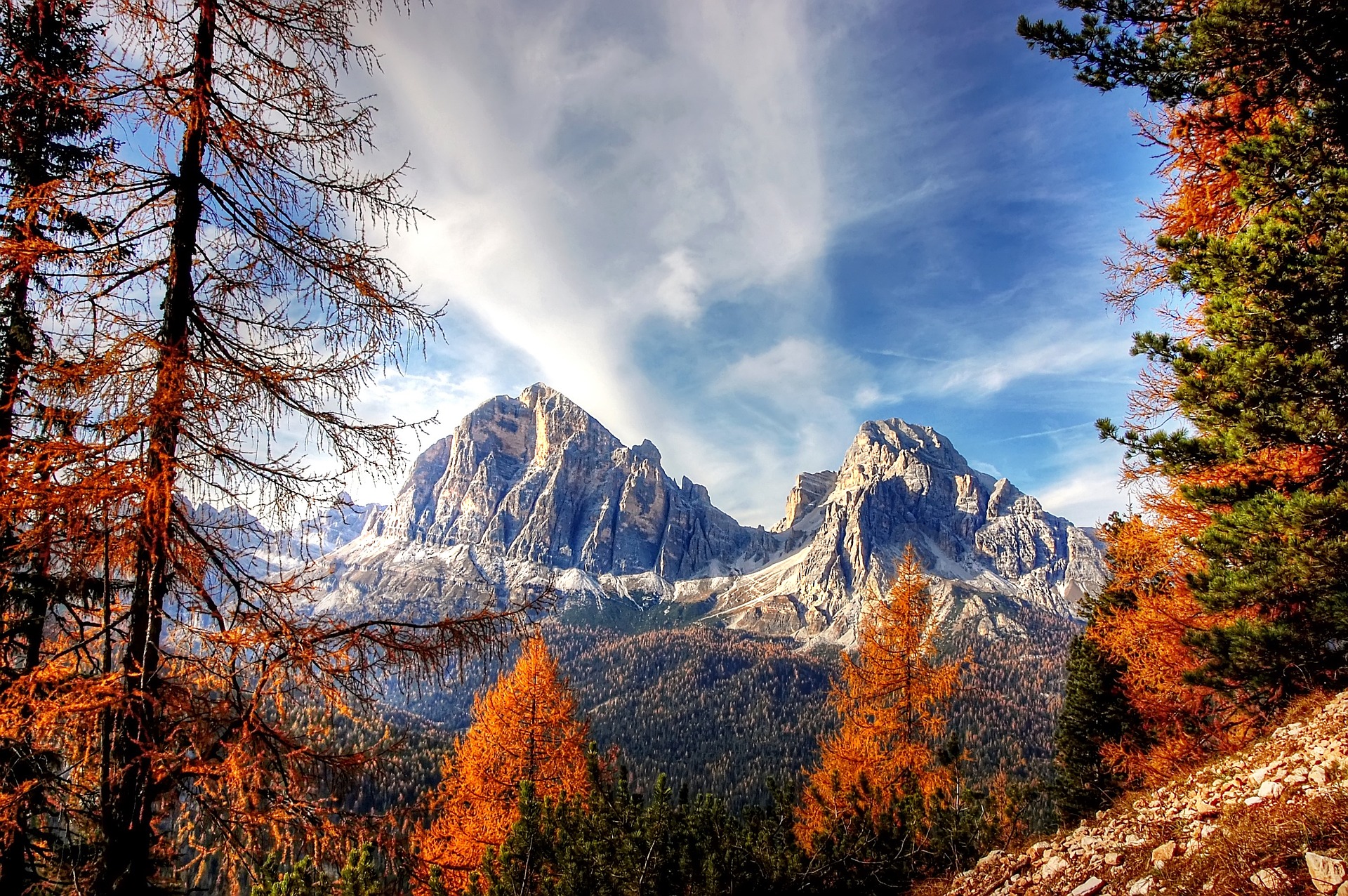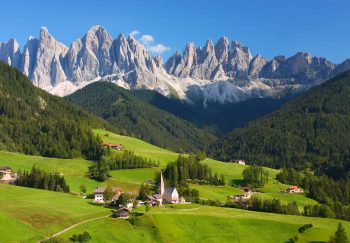Dolomites, Italy
This sub-range of Southern Limestone Alps was designated a UNESCO World Heritage Site in 2009. It is most well-known for winter skiing and summer mountaineering.
It is widely known as the birthplace of Ferrata. With more than 170 routes of different lengths and difficulty levels, it is still a top destination for fans of the sport.
Via Ferrata route through the Dolomites, with a suspended bridge. Herbert Summerer. Photo
What’s Via Ferrata?
A via Ferrata route is a protected climbing route that is bolted into the rock. It is often made of metal ladders, steps or suspension bridges, and zip wires. The harness is used to secure climbers onto the cable.
Via Ferrata, which can be translated from Italian to mean “iron path”, is halfway between rock climbing or scrambling. Combining this combination allows novice climbers the opportunity to attempt ascents that would otherwise require a lot of technical rock climbing skills.
For centuries, the Alps have had protected paths up and down high mountain faces. The Austro-Hungarian Empire occupied the Dolomites during the First World War. It fought Italy to take control of the region.
Both sides wanted to gain a tactical advantage on mountainous terrain so they set up wooden ladders, ropes, and ropes at various mountains. This enabled soldiers to quickly climb to fortified and lookout positions.
Many of the most popular via-Ferrata routes in the region are found side-by-side alongside trenches or other World War I-era fortifications.
Via Ferrata in Dolomites
After the Second World War, the Italian Alpine Club established the modern ferratas that still exist in Italy. Degrading ropes and flimsy wooden ladders were replaced by steel cables, iron ladders, and metal rungs.
Many of the original routes built by the Austrians or Italians have been restored, allowing climbers to relive a little of the region’s past.
How to Climb Via Ferrata
A via Ferrata climb is not like other mountain climbing activities. There are many places that rent equipment nearby. All you need to climb successfully is a harness and carabiners, a lanyard (a via-Ferrata set), appropriate footwear, and a helmet.
Once all of the gear is set up, climbers can attach themselves to the steel cable to begin climbing. Although no prior experience is required, it is highly recommended that climbers have a good sense of balance, moderate physical fitness, and no fear of heights.
How Via Ferrata Are Categorized
Via Ferrata in the Dolomites is classified into five different categories depending on their difficulty. Via ferratas of grade 1 are considered easy. These are often short ascents that include many climbing aids.
Grade 5 via ferratas, which are the most difficult, feature long climbs up ladders and climbers taking to exposed ridgelines with very few climbing aids.
There are many via ferratas in the Dolomites that can be attributed to climbers’ abilities and what they want to see. There are many options, from easy routes that can be done by the whole family with great views and short ascents to more challenging ones for those who want to go on an adrenaline rush.
Top Via Ferrata In The Dolomites
More than 170 via-Ferrata routes are scattered throughout the Dolomites. You can easily access many of the most popular ones from only a few mountain towns.
Cortina d’Ampezzo may be the most famous of these mountain villages. It is surrounded by several mountain groups including the Tofane massif. This allows easy access via Ferrata routes that are both easier and more difficult.
Val di Fassa
The Val di Fassa lies southwest of Cortina. The idyllic town is located in the shadows of some of the highest peaks of the Dolomites. Many via ferrata adventures start from this small, picturesque village.
Punta Penia is located in the Marmolada mountain massif at 3,343m high and is only an hour drive west from Val di Fassa. The summit can be reached by climbing over a glacier. It’s home to one of the oldest via ferratas of the region.
Via ferrata in Monte Paterno. Photo by Enrico Geremia
Climbers who are heading to Catinaccio can also start from Val di Fassa. The spot is well-known for its pink color, which is due to the presence of dolomite minerals in the rock. It is particularly popular during sunset when the Dolomites are visible.
Book it: Get a local mountain guide to help you climb Val di Fassa’s best via Ferrata
Corvara
Corvara lies just north of Val di Fassa. Corvana is located near the Sella group’s peaks, which offer numerous via Ferrata routes for intermediate and advanced climbers. Piz Boe is the highest mountain in the massif and is one of the most popular.
The town of Auronzo di Cadore is located just in front of Tre Cime di Lavaredo, offering access to Monte Paterno. The peak offers breathtaking views of the famous triple-topped massif. This makes it a top choice for Ferrata climbers who want to reach the Dolomites.
You are planning to climb these via ferratas? Book a guided tour with an experienced guide through Explore-Share.com. This online booking platform allows you to book guided adventures all over the world.
Book it: Get a certified local mountain guide to climb Corvara via Ferrata












